Our Favorite Southern Layer Cakes With Unique Stories Behind Them
Tradition makes these layered masterpieces even sweeter, from a meringue-topped county fair winner to Southern Living's most popular cake recipe in history.
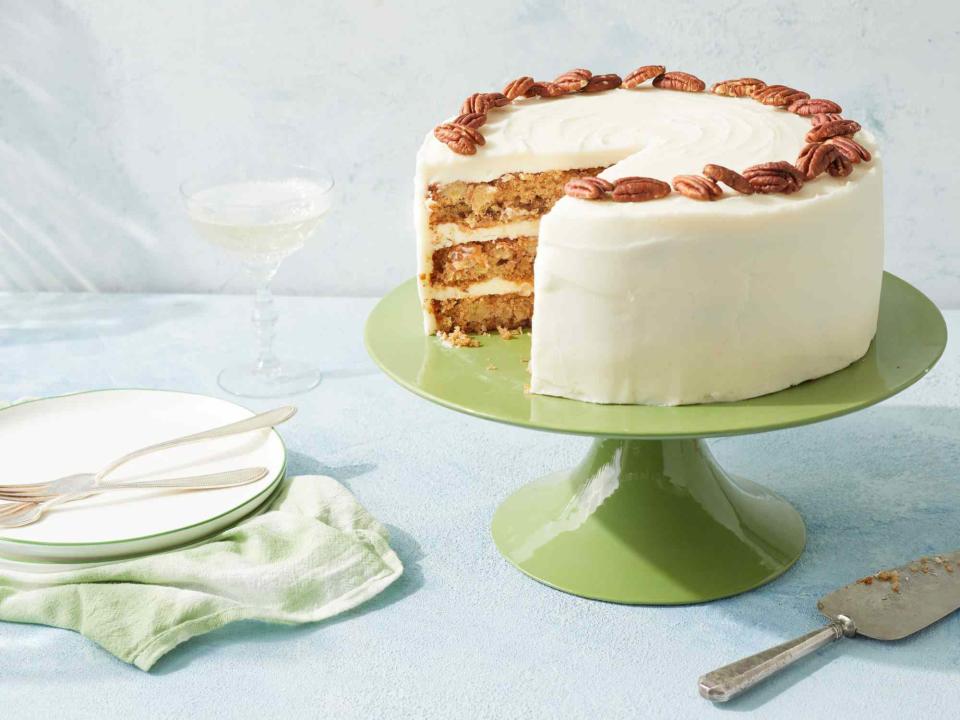
In the South, layer cakes are a point of pride for those who make them. Sitting on top of a heirloom cake stand and wrapped in swirls of homemade frosting, these layered masterpieces are made with tradition and love, often stemming from family recipes written on stained notecards and community cookbooks passed down through generations. While there are no shortage of vintage Southern cakes that we'll always keep around, there are a select few with such unique backstories that they deserve a little extra recognition. Whether it's a meringue-topped county fair winner, soda-spiked creation, or regional delicacy you'll only find in one place, we're giving credit where it's due for these famed Southern layer cakes.
No matter how much time passes, these 14 storied Southern layer cakes are as classic and beloved as it gets.
Lane Cake
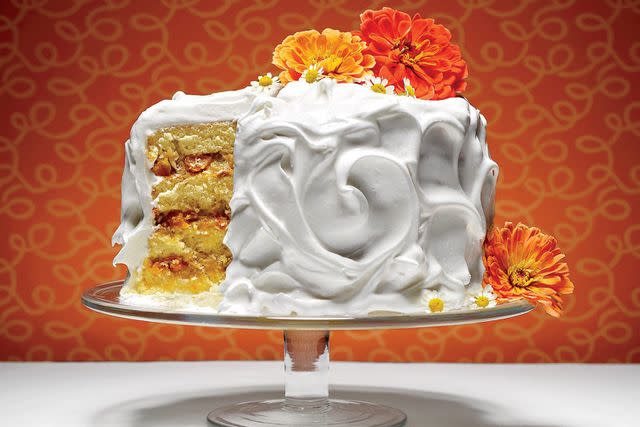
Hector Sanchez
More than 100 years ago, Emma Rylander Lane of Clayton, Alabama, entered the annual baking competition at the county fair in Columbus, Georgia. She took first prize. No doubt the judges were swayed by her cake's filling: a richly yolked custard heavily spiked with bourbon. The recipe, entitled Prize Cake, can be found in Some Good Things To Eat, a collection of personal favorites she published in 1898. Though later versions add shredded coconut and pecans to the filling, the original recipe calls for raisins only. In July 1960, Lane Cake gained literary fame in To Kill A Mockingbird. And in March 1966, Southern Living featured a recipe for Lane Cake in its second issue.
Jam Cake
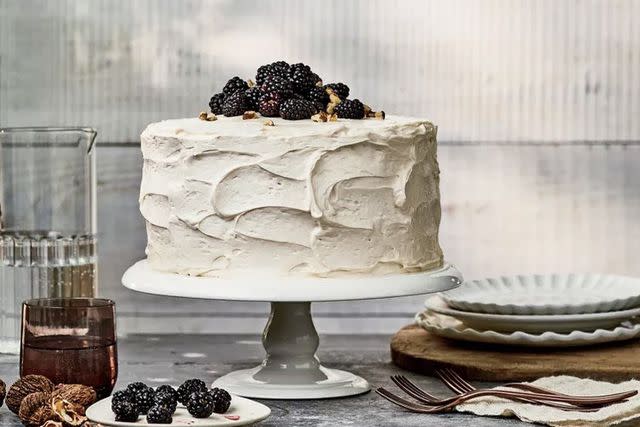
Cindy Barr; Food Styling: Torie Cox
The origins of jam cake lie deep in Appalachia where store-bought sugar was once scarce. Cakes were often sweetened with homemade jams, filled with wild berries and mountain fruits. The payoff for the genius swap? Rich, dense cake layers with a depth of flavor sugar alone can't deliver. Most recipes start with a tangy buttermilk batter ramped up with one or more flavors of jam and a flurry of ground spices. Foraged hickories and black walnuts, or wind-fallen pecans were added along with raisins and dates. This latest addition to our archives is finished with a quick caramel cream cheese frosting instead of the traditional burnt sugar icing.
Coconut Chiffon Cake

Caitlin Bensel; Food Stylist: Torie Cox
White as a Sunday glove, coconut is the doyenne of Southern layer cakes, a masterpiece of home cookery that has crowned dining room sideboards for more than a hundred years. Flip through back issues of Southern Living and you'll find more than 40 top-rated twists too good to pass up. In the 1940s, Eudora Welty chose a coconut cake as the culinary centerpiece of Delta Wedding. Faulkner even gives it a shout-out in The Unvanquished. One of the earliest published recipes appears in Mrs. Hill's New Cook Book. Writing from her rural Georgia kitchen in 1867, Mrs. Hill advises to make the filling "as thick and rich as desired," which is exactly what we did with our latest creation.
Lemon-Cheese Layer Cake
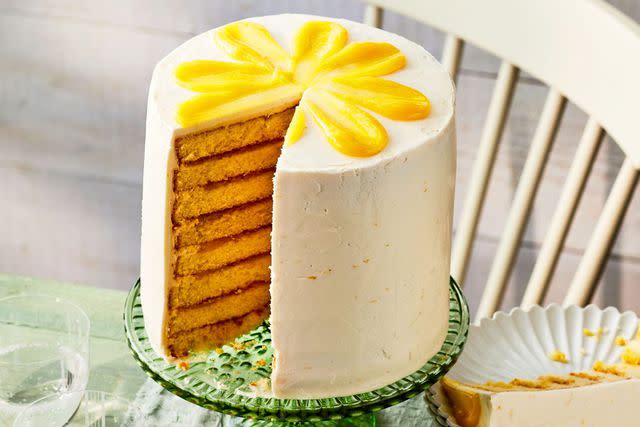
Victor Protasio; Food Styling: Ruth Blackburn; Prop Styling: Ginny Branch
Expecting a twist on cheesecake? You're in for an even sweeter surprise. These layers are filled with a buttery rich lemon curd instead. Recipes dating back to the early 1800s called for acidulating cream with lemon juice, then separating the curds and whey. Over the years, the original recipe for lemon cheese evolved into one using butter and eggs. By the 1940s, almost every good cook south of the Mason-Dixon Line had a recipe for lemon cheese layer cake. And if you've ever lived anywhere near Hartford in southeast Alabama, you know of the local ladies still famous for their 14-layer lemon cheese cakes.
Hummingbird Cake
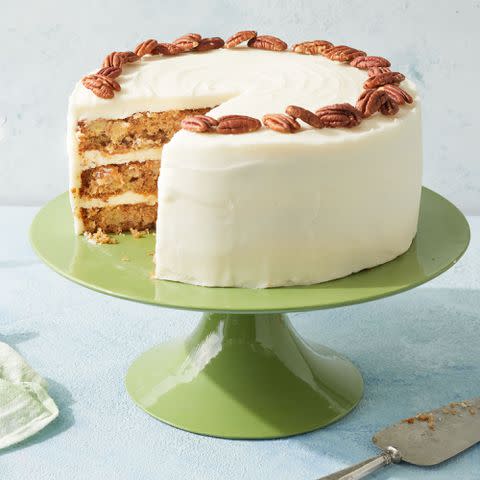
When the Hummingbird Cake was first submitted to Southern Living in 1978 by Mrs. L.H. Wiggins of Greensboro, North Carolina, we had no idea the cake would become our most popular and beloved Southern cake recipe ever. Over the years and across the miles, hummingbird cake has gone by many nicknames, including "A Cake That Doesn't Last," "Doctor Byrd Cake," and "Tropical Treat Cake." The ultra-moist confection has a sweet, fruity, spiced flavor profile that might be described as carrot cake meets banana bread.
Coca-Cola Cake
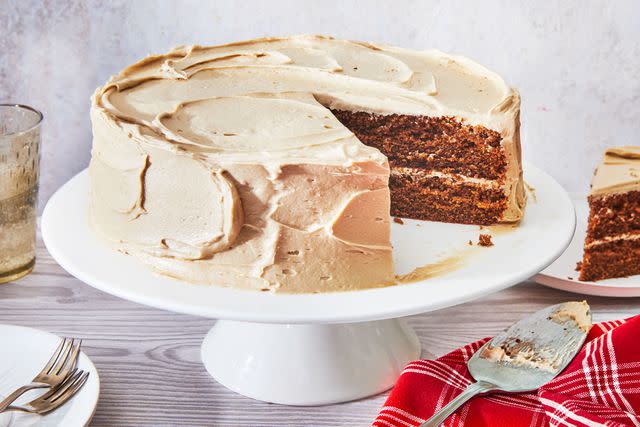
Caitlin Bensel; Food Stylist: Torie Cox
In 1886, a pharmacist named John Pemberton created cola syrup in Atlanta, Georgia. Over time, Coca-Cola became a pantry staple, and made its way into Coca-Cola Cake somewhere around the 1950s. The cake's popularity quickly spread, and it became even more widely recognized after premiering on the menu at Cracker Barrel in the 1990s. While the frosting sometimes consists of a rich fudgy chocolate icing, our version has a tangy cream cheese rendition.
German Chocolate cake
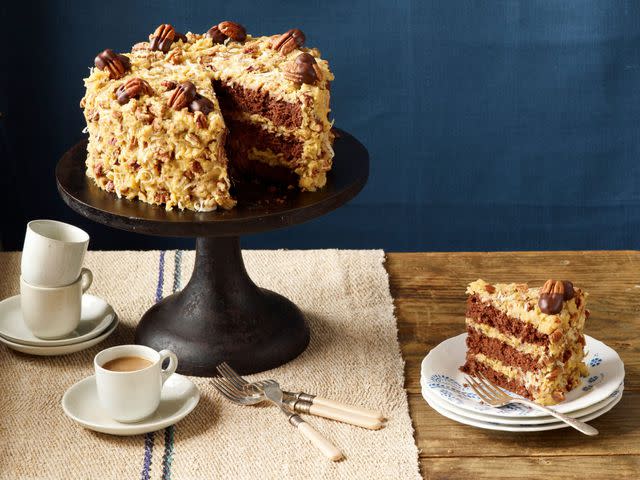
Despite the name, German chocolate cake was born in Dallas in the 1950s. In 1957, the Dallas Morning Star published the first known recipe for German's Chocolate Cake (named after Sam German, who created a baking chocolate for Baker's Chocolate Company in the 1850s). The chocolate-coconut-pecan confection is perfectly decadent.
Doberge Cake

A special-occasion cake that hails from New Orleans, a doberge is customarily six to nine layers of vanilla sponge cake sandwiched between custard or creamy filling. Often, the cake is made in a half-and-half manner featuring two flavor profiles, such as the popular regional doberge combination of chocolate and lemon. Our version is made it a little easier by using jarred lemon curd and store-bought chocolate pudding.
Apple Stack Cake
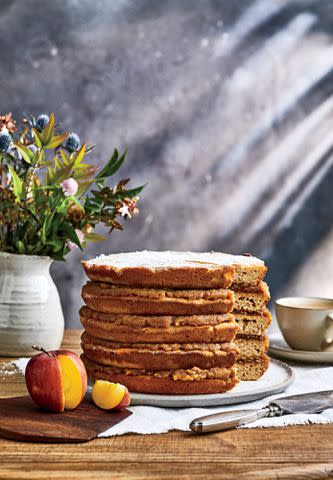
According to Appalachian folklore, this cake was traditionally a wedding delicacy made from layers brought individually by women in the community that were then stacked together. Like all apple stack cakes, our version tastes best after it has "cured" for two to three days. Wrap the cake in cheesecloth, then in plastic wrap, and store it in a cool, dark place such as a cupboard.
Chocolate Mayonnaise Cake
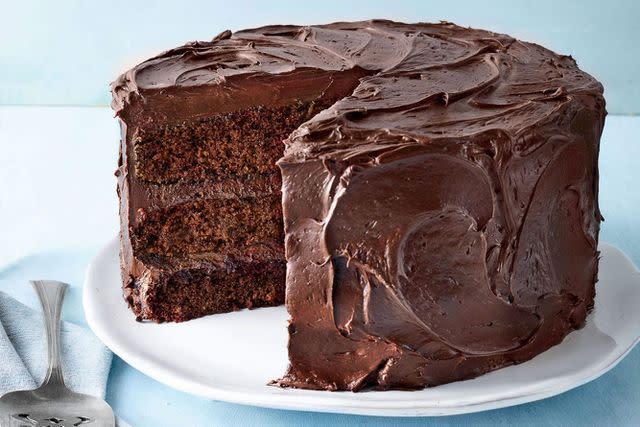
Alison Miksch; Prop styling: Mary Clayton Carl; Food styling: Mary-Claire Britton
Whether you're a fan of Duke's, Blue Plate, or Hellman's, there's no question that mayonnaise is an essential pantry staple in the South. So while we might not be able to fully claim the origination of this layer cake, there's a good chance it was created in the community cookbooks of the South. This cake is prized for its texture, thanks to mayonnaise. Traditionally, it is topped with a rich chocolate icing.
Lady Baltimore Cake
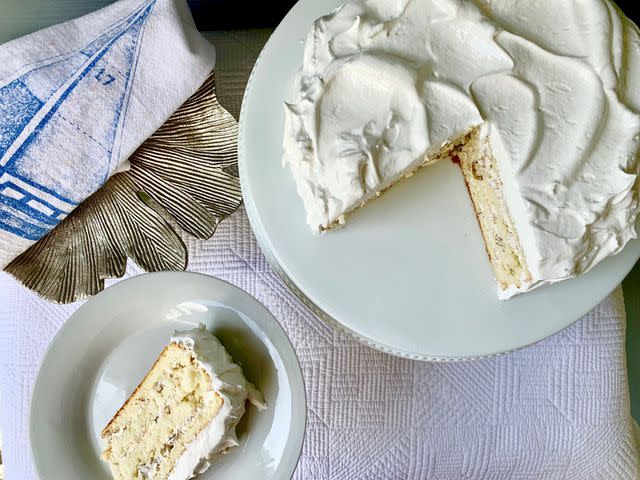
This classic cake hails from Charleston, not Maryland, and its origin story lies in fiction. In 1903, author Owen Wister wrote a romantic novel titled Lady Baltimore in which a cake so impresses the narrator that it becomes the focal point of the story. The cake Wister described was one that he likely enjoyed in real life at The Women's Exchange tearoom in Charleston, perhaps baked by Alicia Rhett Mayberry, who is often credited for the cake. The pillowy white cake is enhanced by the syrupy sweetness of dates and raisins and the rich aroma of rum.
Red Velvet Cake
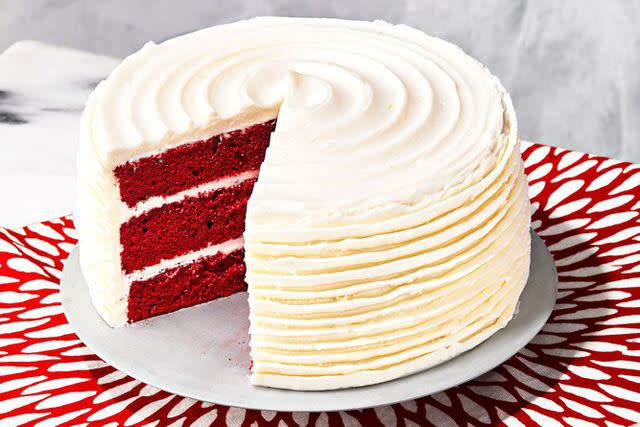
Antonis Achilleos; Food Styling: Emily Nabors Hall; Prop Styling: Mary Clayton Carl Jones
Legend has it that chefs at the Waldorf Astoria dreamed up a hybrid "Red Velvet" cake during the 1930s and served a slice to the owner of the Texas-based Adams Extract Company while he was a hotel guest. By the 1940s, Mr. Adams was marketing red food coloring to the masses with recipe cards for a Red Velvet Cake that his wife Betty developed. In 1989, an armadillo-shaped groom's cake in Steel Magnolias kicked off a cult following for red velvet. The craze has continued, fueled in part by the red velvet cakes that have graced the Southern Living Christmas cover more than once.
Brownstone Front Cake
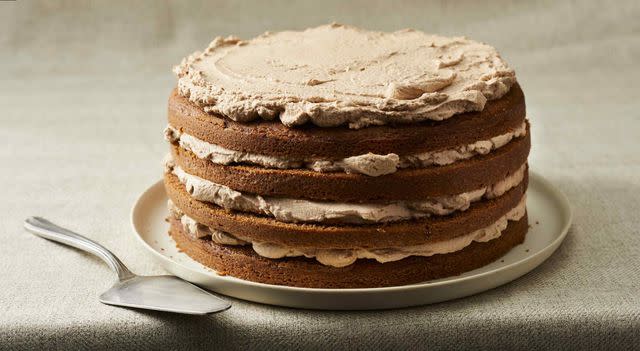
Many descriptions say this cake originated during the Great Depression when chocolate was expensive and hard to come by, and there's a recipe for it in a pamphlet from the 1895 Cotton State and International Expo in Atlanta. Just a few spoonfuls of flavorful cocoa (or, in some versions, a couple of tidy squares of baking chocolate) turn this cake a pale, ruddy brown, the same color as the building blocks of brown stone building facades, thus its name.
Gâteau de Sirop (Syrup Cake)
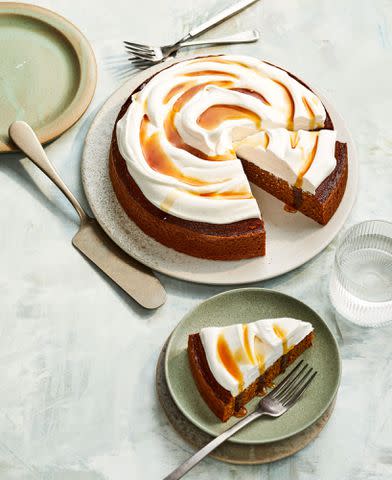
This Louisiana delicacy lets an iconic Southern ingredient—cane syrup—stand out. "By the antebellum period, almost all of the cane consumed in the United States came from Louisiana and the state was the sugar capital of the nation," writes culinary historian Jessica B. Harris. Cane syrup adds deep notes of caramel and butterscotch to this cake, which complement the warm spices in the batter. You'll often see this cake in one singular layer or two short layers.
For more Southern Living news, make sure to sign up for our newsletter!
Read the original article on Southern Living.

